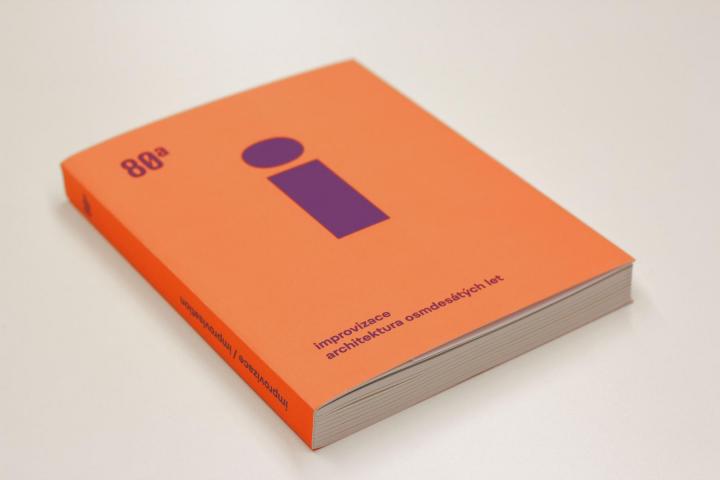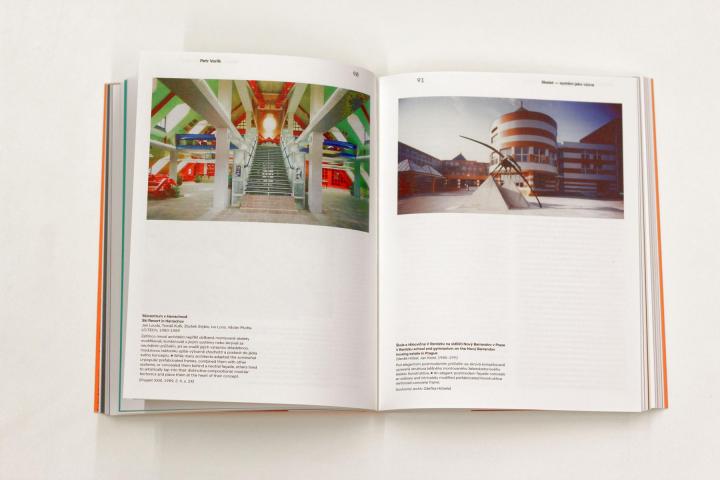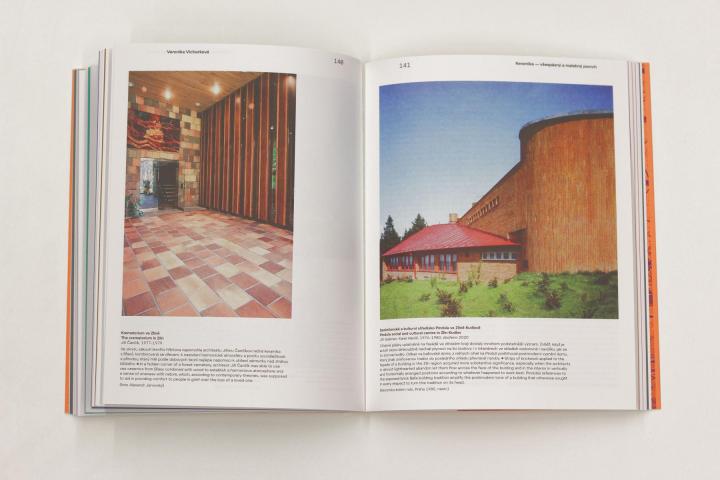
The 1980s in domestic architecture represent the imaginary peak of the contradiction between ambitions of the creators and the real possibilities of building industry. Apart from a small group of prominent buildings, architects and contractors had to put considerable personal effort into design and construction, take risks, and improvise. "Quantity was preferred over quality, and if an architect wanted to enforce his or her author's idea in the ailing economy and the normative timelessness, he or she could only achieve it by creatively reshaping everything available and bending the rules," says Petr Vorlík about the ability to subtly make the most of the little.
In eleven chapters, the publication presents both the state of construction in Czechoslovakia in the 1980s and the specific architectural solutions that can be found in public space to this day. It describes the common architectural practice of the creative use of prefabricated building systems and their adaptation into unusual building layouts, the addition of interesting structural elements to facades, the attempt to involve artists and the partial return of craft details and a more human scale of architecture.
The Improvisation was written as a critical catalogue of the exhibition of the same title and the fourth main output of the project Architecture of the 1980s in the Czech Republic in the National and Cultural Identity II programme of the Ministry of Culture of the Czech Republic. It is loosely based on the first book (a)type (2019), which focuses mainly on selected characteristic phenomena and buildings at the end of normalisation, the second book unbuilt (2020), describing unrealised, often utopian and provocative contemporary visions, and the third book interviews (2020). A specialised map and database of 1980s architecture is being created in parallel at www.architektura80.cz.
The editors are Petr Vorlík and Jan Zikmund from Institute of architectural theory and history at Faculty of Architecture. Text contributors include Klára Brůhová, Jana Bukačová, Hubert Guzik, Lenka Kužvartová, Miroslav Petříček, Marcel Tomášek, Klára Ullmannová and Veronika Vicherková.
The book can be purchased at the Juditina věž bookstore, the VI PER Gallery, the Jaroslav Fragner Gallery or at the IKAN shop at the Faculty of Architecture.
improvizace / architektura osmdesátých let
Editors: Petr Vorlík, Jan Zikmund
Texts: Klára Brůhová, Jana Bukačová, Hubert Guzik, Lenka Kužvartová, Miroslav Petříček, Marcel Tomášek, Klára Ullmannová, Veronika Vicherková, Petr Vorlík, Jan Zikmund
Reviews: Richard Biegel, Petr Kratochvíl
language corrections: Jan Kovanda
Translation: Robin Cassling
Graphic design and typesetting: Jan Forejt / Formall
Graphic corrections: Jiří Klíma / Formall
Production: Gabriel Fragner / Formal
Print: Tiskárna Helbich
Publisher: České vysoké učení technické v Praze, Fakulta architektury/Faculty of Architecture, 240 pages, ISBN 978-80-01-06902-8

